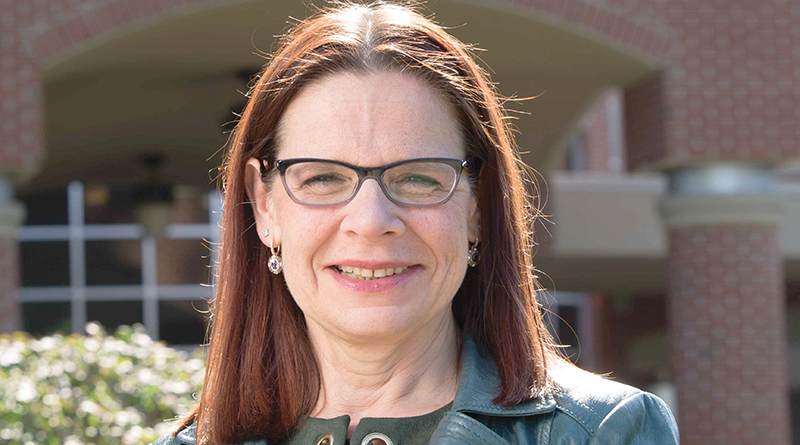Taking Care of the Elderly
Geriatrician Diane Kane transcends her role as caretaker of the elderly at St. Ann’s Community. She is about to celebrate 30 years with the organization
By Mike Costanza
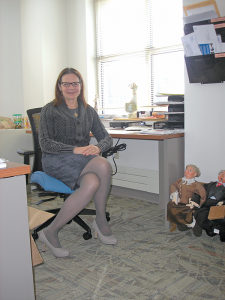
A touch of passion flows through Diane Kane’s words when she speaks of her profession.
“For those of us who love geriatrics as I do, we say to each other, ‘It is a calling,’” she says.
That passion has driven Kane, 61, to help shape local geriatric care. During her nearly three decades at St. Ann’s Community in Rochester, where she is the chief medical officer and medical director, the geriatrician has emphasized the primacy of patients’ treatment goals and helped create innovative programs that meet those goals.
Colleagues have praised her efforts.
“I’ve worked with many, many stellar physicians, but I’ve never really worked with a physician like Dr. Kane,” says Michael McRae, president and CEO of St. Ann’s Community.
As a young girl growing up in Edison, N.J., Kane set her sights on becoming a dietitian.
“I was the little girl that nobody picked on the gym team because she was overweight and not physically fit,” she explains.
She developed good dietary and exercise habits, shed what she calls “quite a bit of weight,” and went on to major in chemistry, foods and nutrition at Rutgers University’s Douglass College. Upon graduating, Kane headed off to Boston to be with the man who would become her husband, Tom Pesciotta.
Once in Boston, Kane took a job as a lab technician at the Harvard School of Public Health, now the Harvard T.H. Chan School of Public Health. Contact with the medical community drew her in a new direction.
“I thought, ‘Hmm, this would really be a good way to take my interest in a good, healthy lifestyle and nutrition, and perhaps help people in a way that I never thought before that I could do,’” she says.
The strong dose of stick-to-itiveness she’d received from her parents helped her meet the challenges of medical school. Growing up during the Depression, they were forced to drop out of high school. Her father served in the U.S. Marine Corps, and eventually took a position as a janitor for a local school district.
“Despite the fact that he never graduated from high school, he always instilled in me a very strong work ethic, and a very strong desire to do the best that I can possibly ever do,” she explains.
Kane went on to complete medical school at the University of Massachusetts, and then headed off to Strong Memorial Hospital to finish her training. By the time she reached the final year of a residency in internal medicine, she was married and expecting her first child.
Though she’d planned to go into private practice, Kane wasn’t quite ready to do so. Then, she heard that St. Ann’s Home was looking for a new assistant medical director.
“I thought, ‘this is a reasonable starting job for a young doctor who has a young baby,” she says.
Kane stepped into her new position in June of 1987. Her husband, a musician with a degree from Boston’s Berklee College of Music, stayed home to care for the first of their three children.
“We decided as a couple one of us was going to stay at home,” she said. “We’re very old-fashioned people — we chose for our family not to use day care.”
Tapping into knowledge
Though she initially found the idea of being the person in charge of treating others a bit daunting, Kane soon learned how pleasurable her new job could be.
“I quickly discovered that it’s a privilege to take care of seniors,” she said. “A senior comes with a whole life worth of history that they are just dying to share with somebody, if you give them even just a few minutes of time.”
In those days, St. Ann’s consisted of St. Ann’s Home and The Heritage, a 19-floor tower, both of which were on the same Irondequoit campus. The institution offered a relatively limited range of services for seniors; most came to it for long-term care.
“We were a nursing home back then — and only a nursing home — with a sprinkling of rehabilitation,” Kane said.
Even the demand for St. Ann’s services was lower than it is now.
“We thought, when were getting one to three admissions a week, we were bombed,” Kane says.
All admission and treatment records were on paper, phone mail didn’t exist and cell phones were large, heavy and rare. When on call, Kane carried a beeper. It could go off anytime, even when she and Tom were out with their kids.
“What do you think we had to do in those days?” she asked. “Find a pay phone.”
Since then, St. Ann’s Home has grown into St. Ann’s Community, which encompasses the institution’s 388-bed main facility and two independent living communities, Chapel Oaks and Cherry Ridge. The Heritage was demolished in 2012.
Altogether, about 780 seniors call the facility home, according to CEO McRae. The institution’s rehabilitation programs alone receive as many as 10 new patients a day.
While growing, St. Ann’s has also expanded the services it provides seniors. Residents who suffer from a host of physical and mental conditions and ailments can access the services they need in or close to their homes. The practice reflects a “treat in place” philosophy that allows the institution to care for seniors more effectively as they age.
“Treat in place is the idea that we have the proper skill set, the proper tools and the proper training to be able to treat somebody as you’re on that journey,” McRae explains.
In a nutshell, a senior who begins that journey at St. Ann’s can usually obtain higher levels of care as needed, thereby completing it without leaving the institution, McRae said.
“If they start out in the independent setting, then maybe they need assisted living, then maybe they need memory care assisted living, and then ultimately, they may need nursing home care,” says Kane, who helped establish the approach at St. Ann’s. “We can take care of them throughout the continuum of their healthcare needs.”
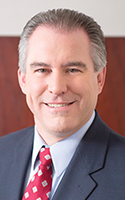
Strengthening health care access
Physicians and other medical professionals at St. Ann’s generally provide the medical care its residents need. On the other hand, those in the two independent living communities often obtain treatment from private, outside physicians. About 12 years ago, Kane helped create an in-house medical office through which those independently living seniors can obtain medical care.
“We wanted to offer our independent folks the opportunity to have a geriatrician as their primary care doctor if so desired,” says Kane, who heads the office.
Nowadays, Kane and the physicians under her regularly head out to provide in-home medical care for St. Ann’s independently living residents. The institution also provides a long list of other benefits for seniors, including rehabilitative treatment, hospice care and adult day care.
Kane’s treatment of St. Ann’s residents allows her to act upon a view she strongly holds — that medical patients should have a great deal of control over their care.
“She takes an exorbitant amount of time with the patients, with the families, with those that are involved, and truly understands what the patients’ goals are,” McRae said.
As St. Ann’s medical director, she has been able to inculcate such views at all levels of care.
“She sets the expectations for everyone in her medical department to have those deep, probing questions around the goals of care,” McRae says. “It’s a foundational and fundamental piece, and it actually helps focus and ground all of the caregivers.”
Those views even help shape end-of-life care. St. Ann’s residents are encouraged to explicitly state the kinds of medical treatments they are willing to undergo if they have lost the capacity to make such decisions, or reach a point where medical care might not benefit them any longer.
“One of the things that is priority in the medical department is having those critical conversations on day one,” Kane said.
Those who wish to do so can enumerate their desires for end-of-life care on a medical orders for life-sustaining treatment form.
“Once it is signed by the patient, or, if the patient lacks medical decision-making capacity, once it is signed by the healthcare proxy or surrogate, everybody throughout the entire continuum of care has to honor its contents,” Kane says.
St. Ann’s was the first institution of its kind in New York state to adopt the legal document, which is widely used and accepted. While encouraging the adoption of such changes, Kane also led the effort to create St. Ann’s Heart Matters program.
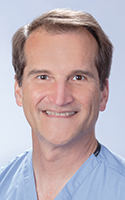
Heart of the matter
“It was clearly her concept, her passion,” says Rochester General Hospital Chief of Cardiology Gerald Gacioch, who helped create Heart Matters and consults for the program. “She’s a dynamo.”
Heart Matters helps those who have undergone cardiac surgery or are suffering from heart ailments recover as quickly as possible, and avoid being readmitted to the hospital. The program serves those who are staying in St. Ann’s 72-bed Wegmans Transitional Care Center.
“We have what we call a clinical path that we go down to ensure they have the optimal chance of successful rehabilitation,” Kane said.
Effective patient education is essential to that success.
“They’re getting daily instruction in diet, in their medications, other lifestyle things that they can be doing to avoid readmission,” Gacioch explains.
At the same time, Gacioch periodically meets with the center’s physicians and other staff to discuss patients’ treatment. Here, too, Kane has left her mark.
“She’s very much a people person,” says Gacioch, who has known and worked with Kane for about 25 years. “The team that she’s brought together of doctors, nurses and mid-levels all the way down to the people who are washing floors, they are all smiley nice, always looking you in the eye.”
Fast Facts on Dr. Diane Kane
• Has watched “General Hospital” since she first sat down to watch the soap with her mother in 1963.
• Enjoys relaxing with “I Love Lucy,” and has every episode on DVD.
• Has a thing for craft beers.Friends have nicknamed her “Diane Rabbit.”
• Calls husband Tom Pesciotta her “rock.”
• Knows where all the best bargains are — and loves looking for them.
• Collects Santa Claus figurines — she has 500 of them.
‘Diane Rabbit’
On her off time, what there is of it, Diane Kane, St. Ann’s Community’s chief medical officer and medical director, enjoys spending Friday evenings out at dinner with her husband, whom she calls “my rock.”
“I love it — it’s just a very special time,” she says.
They also enjoy watching “I Love Lucy” reruns together on DVD after she gets home from work.
To stay in shape, Kane works out as many as six days a week, and watches her diet closely. She avoids almost all meats, and eats so much fruit and vegetables that friends call her “Diane Rabbit.”
During the coming years, Kane plans to continue improving senior care at St. Ann’s, and the surrounding area.
“We want to take this model of following a senior throughout the continuum of care that has been very successful at St. Ann’s Community and now expand it to the Greater Rochester area,” she says.
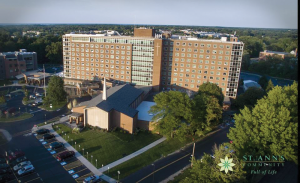
St. Ann’s Community
St. Ann’s Home
Located on 37 landscaped acres in Irondequoit, St. Ann’s Home offers 388 skilled nursing beds, many of them in single, private rooms. Geriatricians, internists, ophthalmologists, dentists, medical and surgical specialists and other professionals stand ready to meet residents’ needs. The facility is also across the street from Rochester General Hospital, should a more serious emergency arise.
Older adults who are not in need of long-term care can also turn to St. Ann’s Home for the treatment or assistance they need. At the Wegmans Transitional Care Center, those recovering from surgery, injuries or other medical conditions can obtain a variety of short-term, residential rehabilitation services, from physical therapy to therapeutic recreation. Seniors who wish to spend their last months or days in comfort in peaceful, home-like surroundings can do so at the Leo Center for Caring, the facility’s on-site hospice.
Beyond offering therapeutic advantages, St. Ann’s Home features such an on-site hair salon, beautiful walking paths, the opportunity to attend field trips and other amenities.
Chapel Oaks
For seniors who want to enjoy an active, independent retirement, Chapel Oaks could be the key. Its 14 acres offer private one-and two-bedroom apartments within reach of the Rochester area’s attractions. The rental units can come with balconies or patios, and sometimes feature dens. Residents can enjoy meals in Chapel Oaks’s bistro or a restaurant-style dining room, cool off in its indoor swimming pool, walk the trails of St. Ann’s Home or enjoy the other amenities that the complex offers. Skilled nursing care is available at all times, and residents have priority access to higher levels of assistance or medical treatment.
Cherry Ridge
Located on 41 wooded acres in Webster, Cherry Ridge features one or two-bedroom apartments and cottage homes in a variety of styles—the cottages even feature fireplaces.
Seniors who are fully independent, in need of assisted living services or who might at times suffer from memory deficits can all call Cherry Ridge home. Though the services available to those staying at the complex depend upon their residences and needs, the complete list includes meal and housekeeping packages, enhanced assisted living care and 24-hour access to the staff via an emergency call system. Additional staff members are available for those in need of memory care services.
For additional information on St. Ann’s Community, go to: www.stannscommunity.com.

